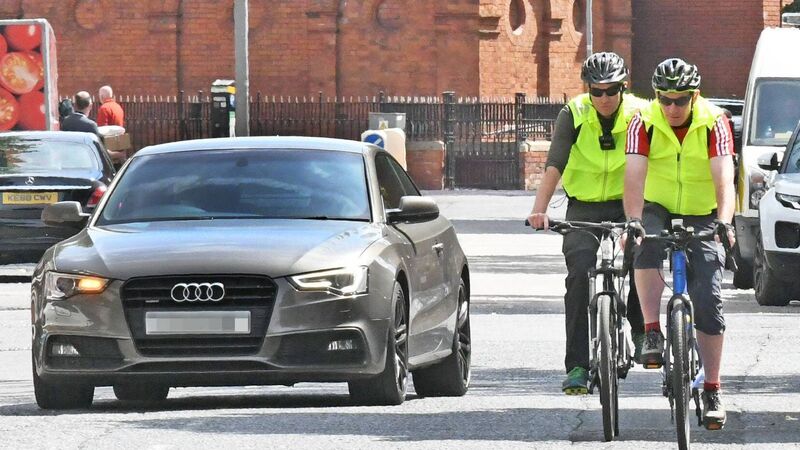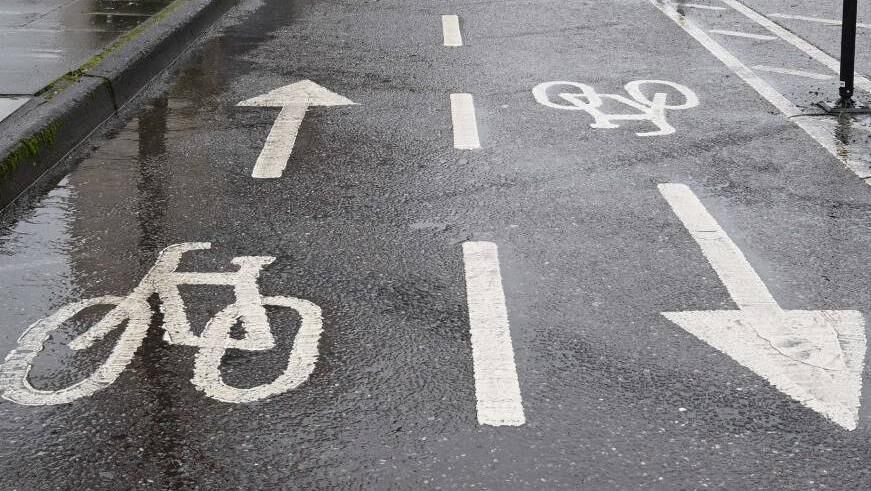Catherine Conlon: Transport policy lacks ambition to address the climate crisis

The latest Census data shows the number of people who cycle to work has increased by a mere 7%. File picture
A legal move has cleared the way for a major new road network that will shorten travel times between Dublin and Kerry by more than an hour.
The hope is the new road network will be completed in time for the 2027 Ryder Cup to be held at Adare Manor and expected to draw 100,000 visitors.
The EU requirement to improve connectivity with the Port of Foynes, now designated as a maritime hub by Brussels is reasonable.
However, the hope to have the road completed in time for the Ryder Cup in order to showcase Ireland’s modern traffic system, as well as the need to cut traffic times for motorists, seems to be the antithesis of what is required from Government to embrace a sustainable traffic system geared towards efficient public transport and active travel.
The latest Environmental Protection Agency (EPA) report reveals just how off course Ireland is from reaching its greenhouse gas emissions targets by 2030.
EPA director general Laura Burke bluntly stated that "the country needs to grasp the climate nettle".
In terms of transport, emissions are predicted to fall by between 1% and 35% despite a 50% target and that is only if the measures such as 940,000 electric vehicles on the roads and a slashing of a fifth of journeys by 2030 are implemented.
The latest Census data shows the number of people who cycle to work has increased by a mere 7%, to more than 60,000 people, while there are 4% fewer people commuting to work by train, Luas or Dart.
However, the numbers driving to work have increased dramatically since 1986, when just over 400,000 drove. By 2022, this had reached almost 1.2m — up by about 50,000 since 2016.
The number of primary school children getting to school by bike has almost doubled from a low start between 2016 and 2022.
"This is likely the result of modest improvements in safe cycling infrastructure across Ireland. Unfortunately, we’re still nowhere near the levels of the 1980s, when most children safely walked or cycled to school," said chairperson of the Dublin Commuter Coalition Felijin Jose.

In 2016, just 7,326 primary school children cycled to school. By 2022, this had increased to 13,752. The figures have been on the rise since 2006, when an all-time low of just over 4,000 (4,087) cycled to primary school.
The number of children walking to school has also risen gradually from 109,053 in 2006 to 133,314 last year.
Older school children, college and university students are increasingly taking the train, Luas and Dart, while bus journeys have remained pretty steady in every group except workers, where bus use has risen.
Reasons for cycling were investigated in a National Travel Survey conducted by the Central Statistics Office in 2019. Over half (55.7%) of respondents said they cycled for enjoyment, followed by keeping fit/ exercise (49%). Greater freedom was cited by 17.6% of people who chose to cycle.
When asked what factors would encourage them to cycle more in the future, safer cycling was by far the most common factor cited by almost a third (31.7%) followed by better health (20.5%) and more cycling-specific routes (17.3%).
The data shows evidence of improvements but nowhere near the scale of a shift to public transport and active travel that is needed to address greenhouse gas emissions and at the same time make cycling to both work and school a healthy and safe option for all age-groups.
An example of how to do just that is to look at what is happening in France. Last month, the government announced a €2bn plan to expand cycling infrastructure as part of a broader effort to encourage people to ditch their cars.
"Today, half of our trips by car are less than 5km," transport minister Clement Beaune recently tweeted. "That’s an immense potential for bikes. With the Plan Vélo, we’re mobilising €2bn to accelerate the deployment of bikes everywhere in France."
Currently, France has 50,000km of bike lanes. The government wants to increase that to 80,000 by 2027 and 100,000 by 2030.
The funding includes helping people purchase and maintain bikes, creating areas for parking bikes and bike training for almost a million younger school children. Updates to traffic rules and design are also being considered. This may include footrests at the side of the road so cyclists do not have to dismount at traffic lights and changing the timing of traffic green lights to allow cyclists to start moving before cars.
Government workers may also get financial incentives to ride bikes to work and financial support to French companies to build and sell more than 1.4m bikes annually over the next four years.
"This visionary initiative will not only transform the way our citizens commute and lives but also make France a global leader in promoting cycling infrastructure and culture," said Olivier Schneider, president of Fédération Française des Usagers de la Bicyclette.

Meanwhile, Cork city’s largest shopping centre, Mahon Point, prides itself as putting sustainability front and centre of how it operates its business.
"We have a strong commitment to the sustainable use of energy," says centre director Justin Young. "Shoppers can be assured that Mahon Point is right up there at the forefront of sustainability."
This includes the use of solar energy, wind, bio and hydro energy to power the shopping centre, the use of LED lighting, a groundwater well for non-potable water in public areas, a food converter for restaurant waste and general waste being converted into refuse-derived fuel.
What is glaringly at odds with this ethos of sustainability is the acres of land around the shopping centre that is prioritised for the parking of over 2,000 cars, while facilities for cycling are very limited.
Electric vehicle supercharging for Tesla drivers is highly visible but if you want to use public transport from large parts of the city suburbs outside of Mahon and Blackrock, your best bet is to get two buses — one into the city centre and another out to Mahon Point. Much easier to drive.
In fact, the 3-4km cycle along the newly reopened greenway from the Atlantic Pond to a stone’s throw from the entrance to the shopping centre must be the nicest route to any shopping centre in Europe. With its wildflower meadows in full bloom and newly-planted native tree saplings, it is a haven away from the stress of traffic and parking that is the alternative travel route.

Crossing the main road and cycling along the busy avenue into the shopping centre is daunting — protected cycle routes here are badly needed, particularly for young children if they are to travel safely and unhindered.
The ultimate goal for the shopping centre is zero carbon, with universal charging points and expansion of bus services in conjunction with Bus Éireann’s Bus Connect.
If Mahon Point truly aims to be carbon neutral, it needs to cut the car parking spaces down to the bare minimum, expand public transport options across the town as well as via the city centre and incentivise pedal power with safe cycling routes from the greenway and cycle paths surrounding the centre right into ample bike-parking for hundreds rather than a handful of bikes. Look to our Dutch neighbours to see how to do this really well.
If it achieves this, its claim to be the most sustainable shopping centre in Ireland would be truly justified.
At a national level, incentivising car trips within towns and cities, that are less than 5km to be taken by foot, bike or bus, and creating the circumstances to make this viable, would be a huge step forward both in terms of meeting climate targets as well as improving physical and mental health for young and not so young alike.
- Dr Catherine Conlon is a public health doctor in Cork and former director of human health and nutrition at Safefood
CLIMATE & SUSTAINABILITY HUB

















